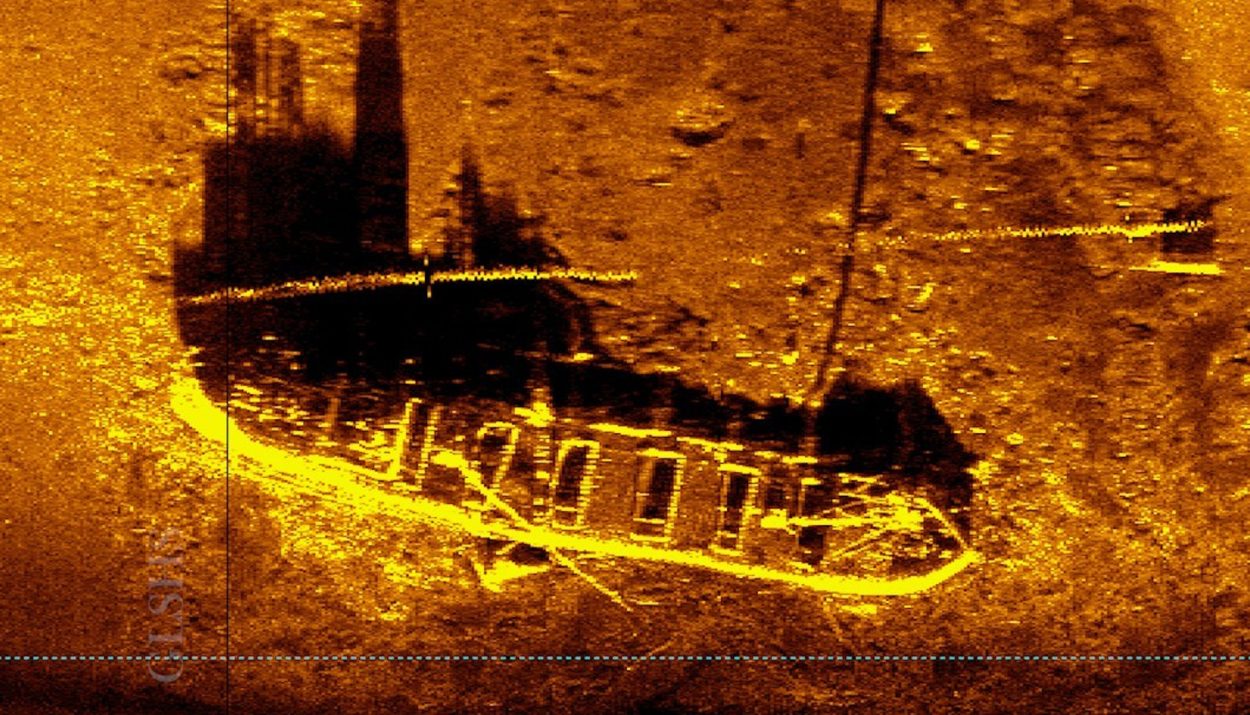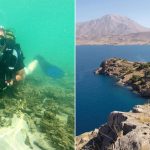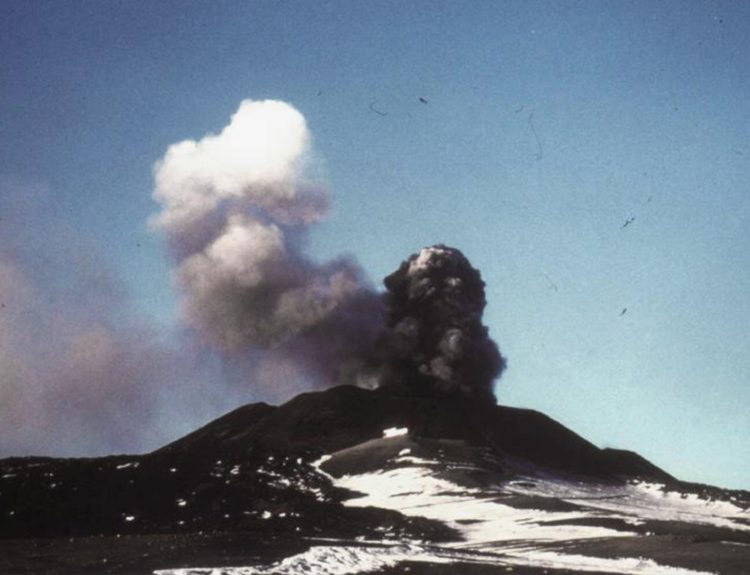As singer Gordon Lightfoot eloquently told us in his 1976 hit, “The Wreck of the Edmund Fitzgerald,” Lake Superior is not a body of water to be trifled with. Over the years, it has become a watery graveyard for numerous ships sailing through the Great Lakes.
But this shipwreck story is a lot more uplifting than the one Gordon Lightfoot immortalized in his song. No one died. There’s an adorable dog. There’s an ironic twist. And, it comes with an environmental message. Let’s examine the sinking of The Huronton and how the shipwreck was found a century later.
The Amazing Great Lakes
The Great Lakes, which straddle the international border between the United States and Canada, are really more like massive, inland freshwater seas than calm, placid lakes. The five lakes – Michigan, Ontario, Erie, Huron, and Superior – cover an area of about 94,000 square miles and hold approximately one-fifth of the world’s fresh water.

Along with all that water, the Great Lakes region, particularly the Upper Peninsula of Michigan, is rich in deposits of iron ore. This was the idea set up for large-scale mining and shipping operations. Beginning in the early 1800s, freighters zig-zagged across the Great Lakes.
There’s a Reason It’s Called “Superior”
Lake Superior is the largest of the five Great Lakes, but that’s not the only reason it is superior to the other lakes. It is actually the largest freshwater lake in the world. When compared to the other four Great Lakes, Lake Superior is colder, deeper, and healthier.
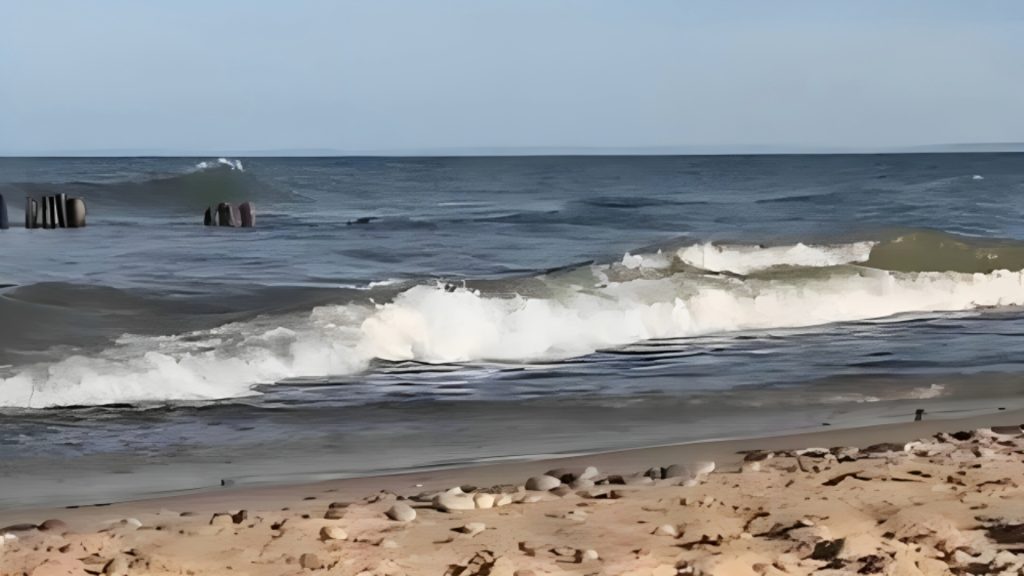
Lake Superior is also a volatile body of water. Storms can pop up suddenly and wind speeds can rival those of hurricanes. The shoreline in many places is made up of shallow, rocky shelves that suddenly drop off to deep, frigid water.
The Last Voyage of The Huronton
The Huronton was a 138-foot-long steel bulk freighter. On October 11, 1923, The Huronton was empty, having delivered its load of iron ore. Since it was much lighter than it would be if its holds were full. It was steaming across Lake Superior at a high rate of speed.
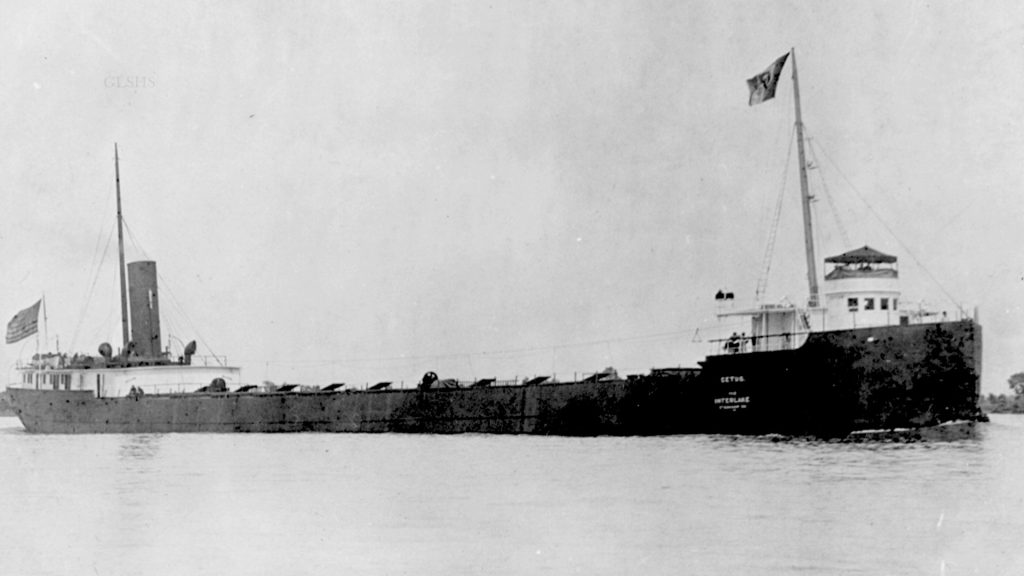
Visibility, unfortunately, was quite poor on this day. The heavy fog combined with smoke from nearby forest fires to form a thick smog that blanketed the area. The Huronton’s captain could not see other ships in the area, which proved disastrous.
A Calamitous Event
Unbeknownst to the crew of The Huronton, another freighter, the 416-foot Cetus, was heading in its direction. The Cetus was loaded with ore and moving at a slower pace than The Huronton, however it was later determined that both freighters were traveling too fast for the conditions that day.
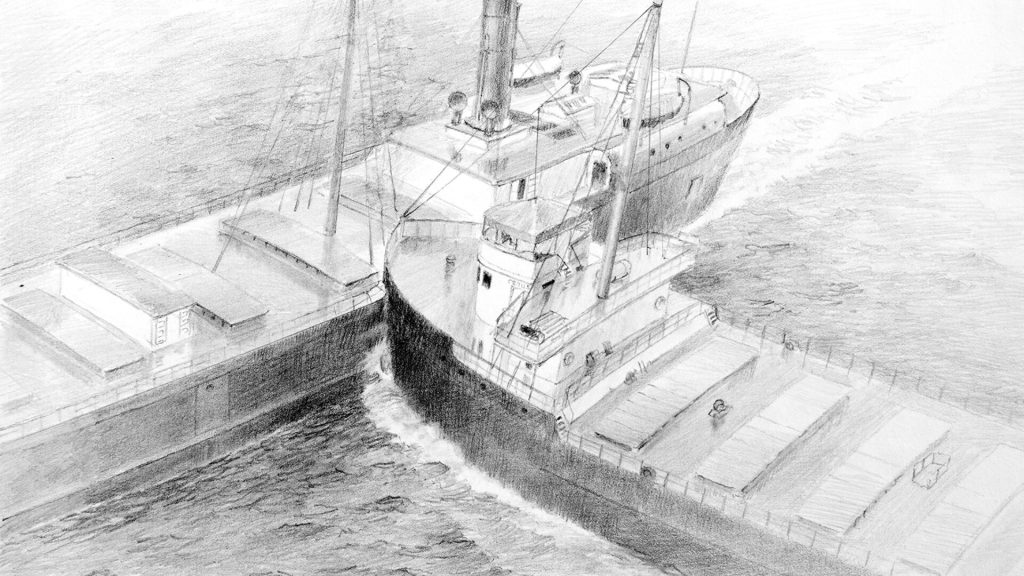
The bow of the Cetus crashed into the port side of The Huronton. At first, the two ships were stuck together, but when the Cetus pulled out, it was clear that The Huronton had taken the brunt of the collision. The Huronton had a large hole in its side that was taking on water at a rapid rate.
The Huronton Was Doomed
When the captain of the Cetus maneuvered his ship away from The Huronton and realized the extent of the damage, he knew that the crew of The Huronton was in trouble. He made the bold move to drive the Cetus back into the side of The Huronton. The move momentarily plugged the hole and allowed the 17 members of the doomed freighter to jump to safety on the Cetus.

When all The Huronton crew members were safely aboard the Cetus, the men made a horrifying discovery. No one had untied the ship’s dog, a bulldog, from its tether. It looked like the dog was going down with the ship!
A Daring Rescue Attempt to Save the Ship’s Dog
The first mate of The Huronton, Dick Simpell, made a split-second decision. He leapt from the safety of the Cetus back onto the sinking Huronton. The freighter was pitching and listing, but Simpell was unshaken. He was determined to rescue The Huronton’s canine mascot.
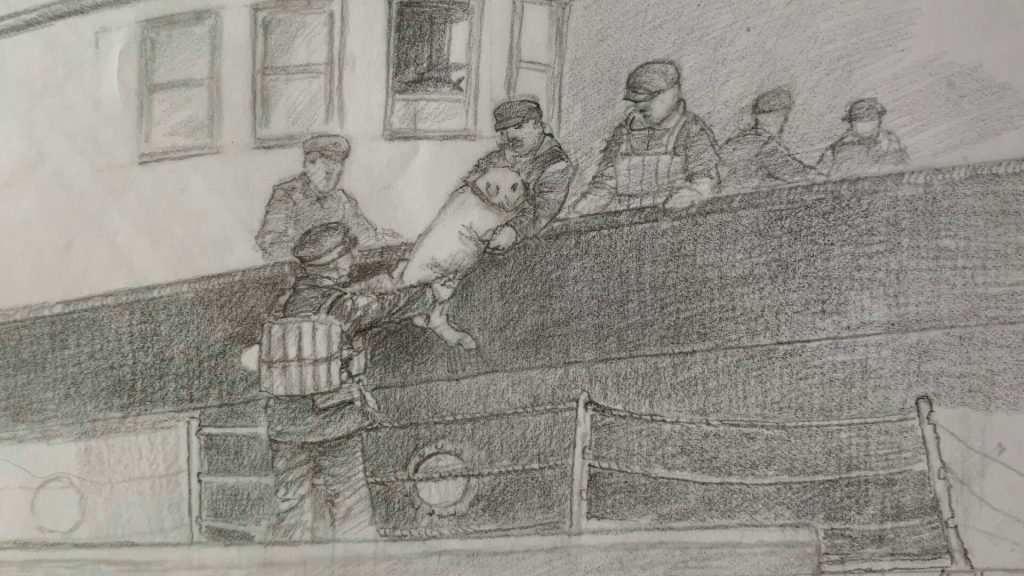
Simpell knew he was risking his life. He moved quickly to the bow of the ship and grabbed the frantic bulldog. He and the pup made it back to the Cetus in the nick of time. Just 18 minutes after the collision, The Huronton disappeared beneath the waves of Lake Superior.
100 Years Later…
In 2023, a full century after The Huronton sank into the depths of Lake Superior, members of the Great Lakes Shipwreck Historical Society set out to locate and document shipwrecks in Lake Superior, something they do every summer. Using side-scanning sonar, the team began searching the waters near Whitefish Point.
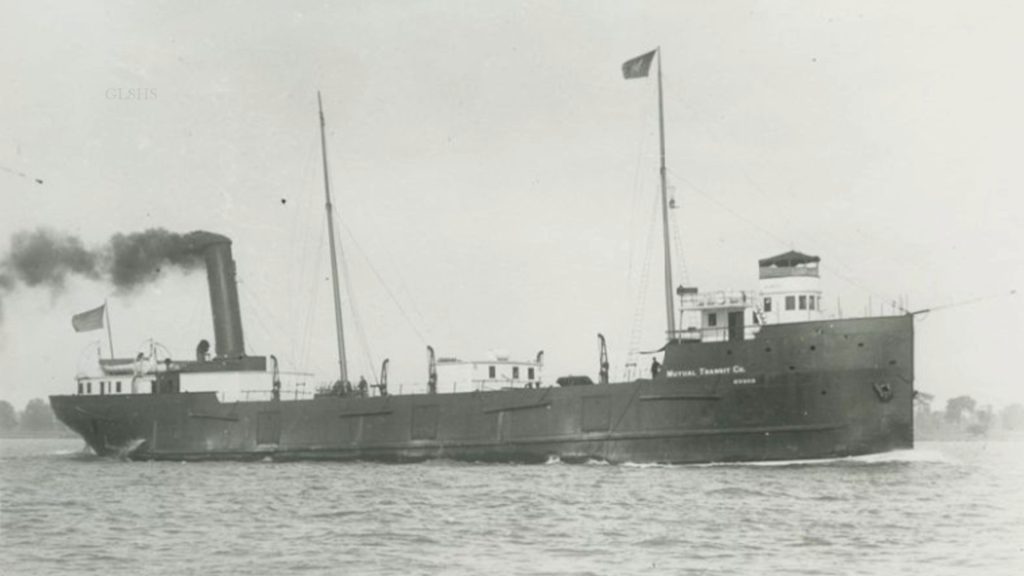
The search team concentrated on the area where the lakebed of Lake Superior is steep, 800-foot drop off. The sonar picked up an anomaly in the form of a straight line. Mother Nature is not so precise; the crew knew this was a find worthy of more investigation.
Finding The Huronton a Century Later
The crew from the Great Lakes Shipwreck Historical Society needed to get eyes on the anomaly before they could determine exactly what it was. Using a remote-operated vehicle, or ROV, equipped with a camera and spotlight, the team was able to reach the site without getting their feet wet.
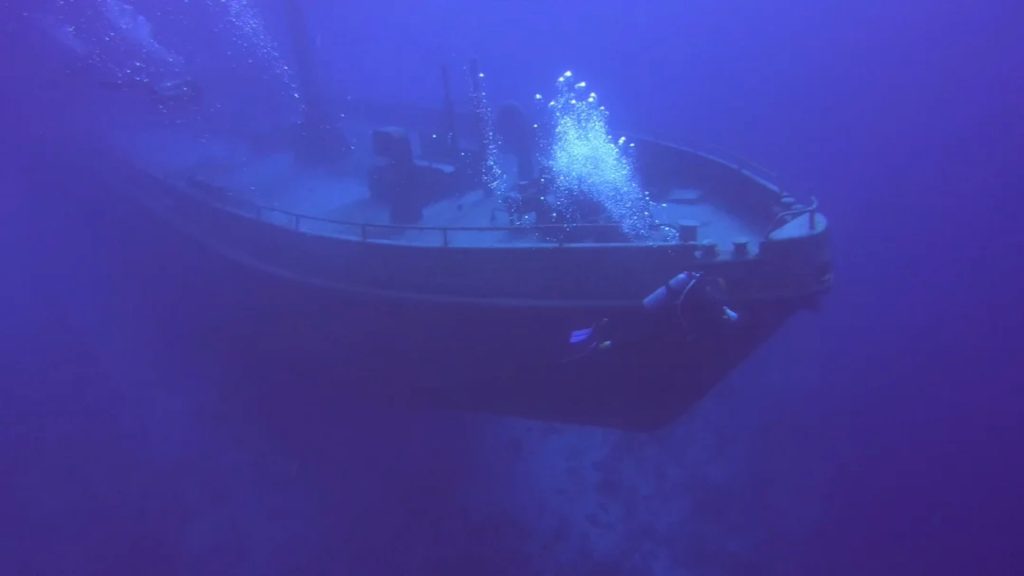
The images sent back by the ROV proved that the team had, indeed, located a shipwreck. Not just any shipwreck either. The video revealed that The Huronton had been found a century after it sank. Remember the Edmund Fitzgerald, the Lake Superior shipwreck made famous by Gordon Lightfoot? The Huronton was discovered less than three miles from the final resting place of the Edmund Fitzgerald.
A Coincidental Date
The Great Lakes Shipwreck Historical Society announced the discovery of The Huronton to the public on October 11, 2023 … on the 100th anniversary of the freighter’s sinking. The timing of the find was not lost on Bruce Lynn, the director of the Great Lakes Shipwreck Historical Society.

Lynn noted that “Finding any shipwreck is exciting.” It was particularly poignant to find the ship a century after it sank. Lynn continued, “To think that we’re the first human eye to look at this vessel 100 years after it sank … not many people get an opportunity to do that.”
Great Lake Shipwrecks Are in Danger
The shipwrecks of the Great Lakes are in danger of being lost, which is why the staffers with the Great Lakes Shipwreck Historical Society are eager to locate and document as many of them as possible. Why are these shipwrecks in danger? What is threatening them? The answer may surprise you.
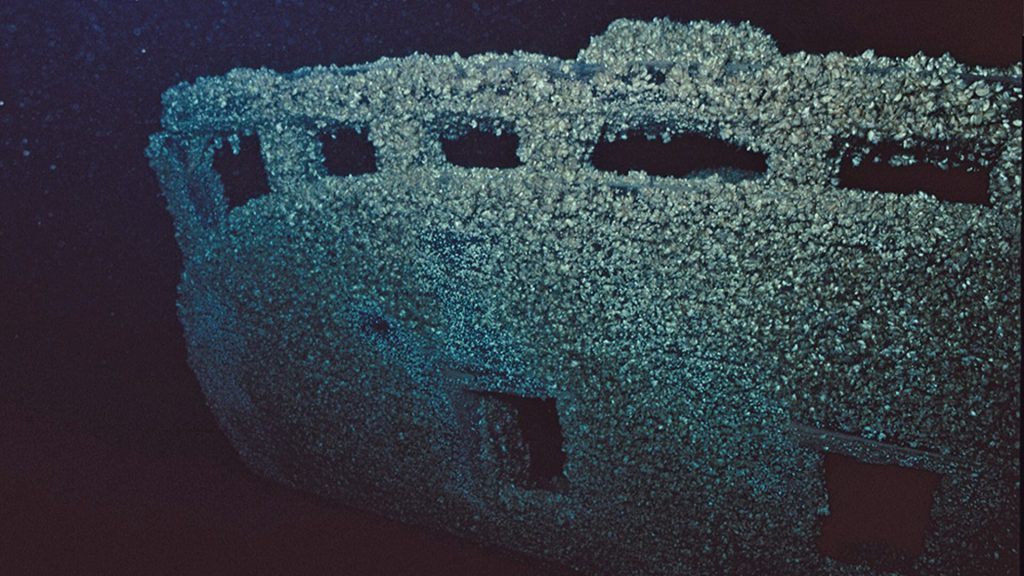
Invasive mussels, primarily quagga and zebra mussels, have made their way into the Great Lakes and threaten the ecosystems of the lakes. Although both zebra and quagga mussels are found in Lake Superior, their populations, so far, have been limited. Quagga mussels, and to a lesser extent, zebra mussels, dine on the wreckage of shipwrecks, reducing them to rubble.
A Race Against the Mussels
Quagga and zebra mussels have been found attached to nearly every submerged aircraft and shipwreck in the other four Great Lakes – Michigan, Huron, Erie, and Ontario. So far, none have been found on Lake Superior wrecks. But Lynn and the others at the Great Lakes Shipwreck Historical Society know that it is just a matter of time.

Shipping vessels sailing through the Great Lakes inadvertently spread these invasive mussels. Although measures are in place to reduce the spread of these invasive species, the fact that zebra and quagga mussels have already been found in Lake Superior means that the yet-to-be discovered shipwrecks in this lake are in danger.

